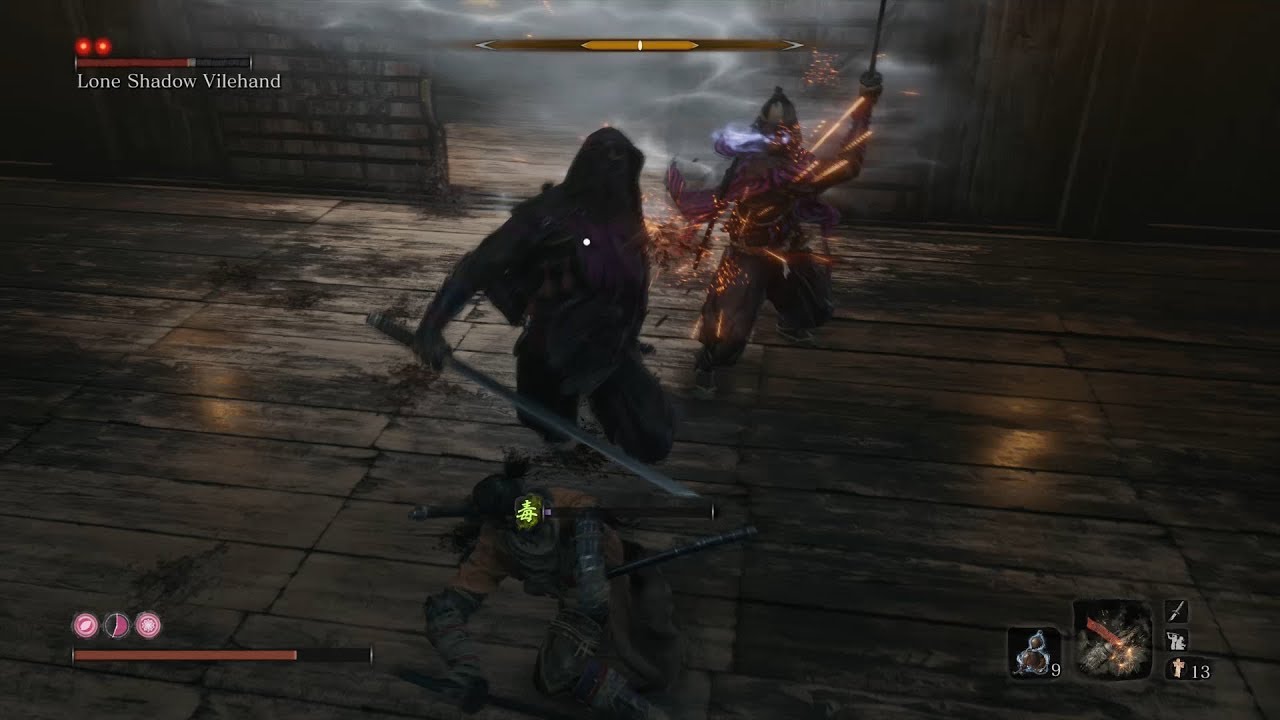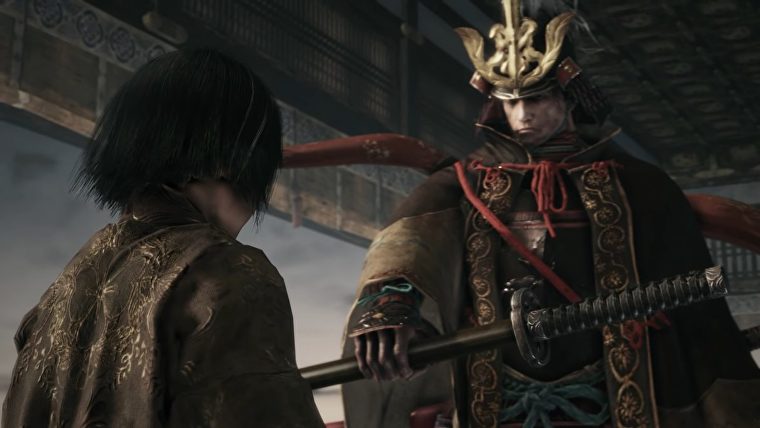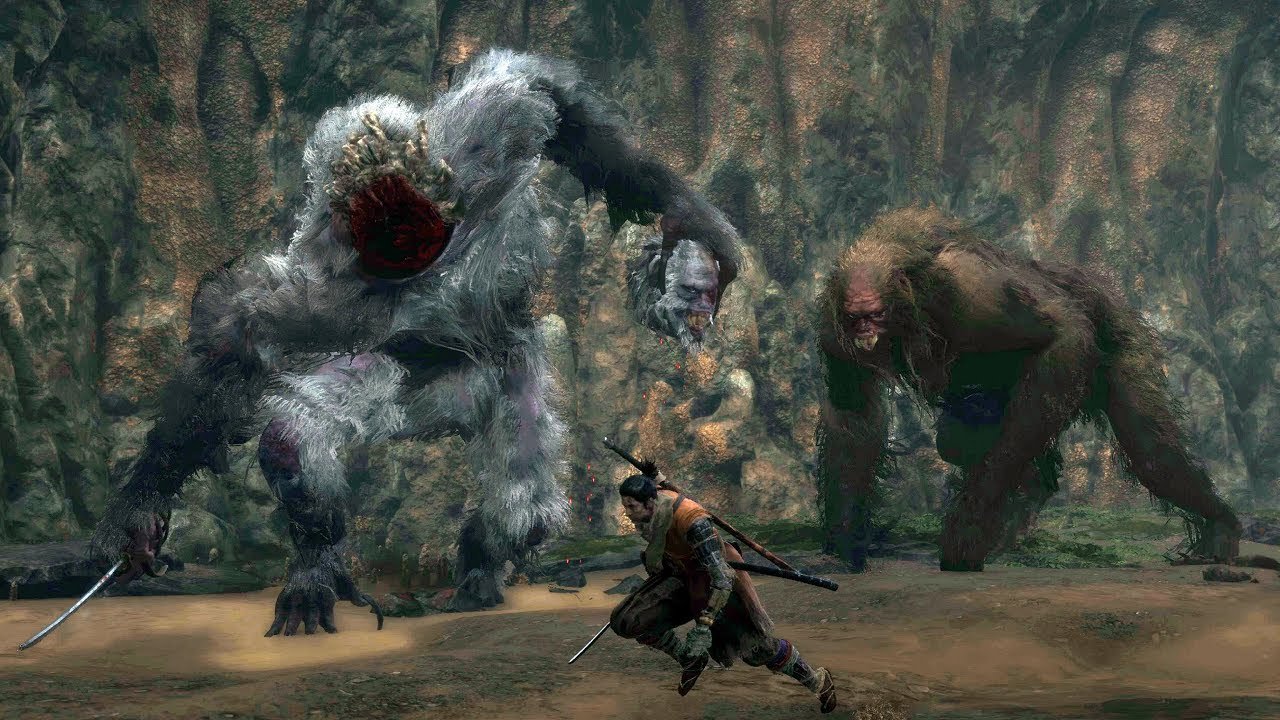Sekiro: Shadows Die Twice is a Timeless Classic
FromSoftware’s Tenchu series was one of the most important games of the ’90s, and many of its design elements were pivotal in establishing the modern stealth game that we know today. The developer nailed the feeling of being a literal ghost in the darkness, using tricks like spoilt food and clever distractions to slowly cut down the opposition and reach your objective without getting caught. It was a great game with plenty of merits, and the franchise would go on to churn out a couple of sequels before going extinct sometime during the seventh generation of consoles.
With Sekiro: Shadows Die Twice, the team initially wanted to do a full-blown sequel to Tenchu – but as the game grew into something much bigger and more complex leading them, they eventually scrapped those ideas and made Sekiro its own thing. The game was released in 2019 to great critical and commercial reception, and it quickly became one of the best action titles to have come out that year with multiple awards and accolades under its belt.
Even 5 years after its release, Sekiro: Shadows Die Twice continues to be one of the finest games to have ever come out of FromSoftware. And that’s a big statement since the developer is behind some of the most influential games including but not limited to Armored Core or Dark Souls. While there are plenty of other factors as to why Sekiro is such a classic, but chief among them all has to be the combat and the design elements that surround that central pillar.

Sekiro presents an immaculate swordfighting system that is entirely dependent on player skills and reflexes. On the surface level, it’s a rather simple system that gives you not more than a few options to attack – but its ingenious parry system is what makes it all so special. Sekiro removes the stamina bars featured in prior games like Dark Souls, and makes battles a test of holding posture for the longest time.
You need to parry enemy attacks just before they land to take a jab at the enemy’s posture meter, and doing so continuously is what will eventually fill out that meter and leave them open to a fatal blow. In that sense, Sekiro resembles more of a racing game where you have to consistently ace each sharp turn and bend on the track to have a chance of winning the race. Similarly, you need to aggressively parry your enemy before they get a chance to recover their posture to be able to finish them up in one fell swoop.
Sekiro has very strong intentions when it comes to how it wants players to interact with the game, and there are very deliberate design decisions in place to help achieve that vision. Regenerating posture meters ensures that players have to be aggressive in their moves, and bosses are generally very good with blocking player attacks – which forces you to resort to parries to whittle down their health bars. Of course, there are some exceptions to that norm like the Guardian Ape which serve to provide a rather unique challenge as compared to other bosses – but such instances are quite rare in the grand scheme of things.

The other important facet of the game’s defining mechanics is the ability to resurrect from death. Sekiro allows you to essentially come back to life for a second shot at battle, but that comes at the risk of unleashing a very deadly disease upon the world which can render certain NPCs corrupt and useless. As such, it becomes really important to keep your resurrections as limited as possible. It’s a really interesting mechanic that caters to give players the extra chance they might need in a pinch, but the risk-reward system that goes along with it prevents it from being a cheap trick that you can pull out every time.
The developer has also purposefully removed RPG elements so players have to play the game a very certain way. Take a moment to compare how Sekiro’s predecessor Dark Souls differs in terms of the gameplay. You could craft a build with heavy armor and heavy weapons that let you eat up damage, or you could be a nimble warrior with a bleed sword or even a sage with a spell book casting magic from afar in Dark Souls – but in Sekiro, you are stuck with your singular Katana and have to master the ballet of frame perfect dodges and parries. The challenge of overcoming a game like Dark Souls mostly lies in understanding the many systems and grinding out enough Souls currency to help you stand a decent chance against the boss, whereas in Sekiro it’s all about perfecting the aforementioned art of swordfighting.

These strong principles of design can also be observed in other aspects of the game, including but not limited to the stealth options on offer. Enemies are generally found in larger groups and are spread across multiple levels of elevation, making frontal encounters an extremely difficult task. As such, you have to come up with interesting tactics to slowly and steadily cull the herd before sparks fly and swords have to slash with one another. Making use of stealth also ensures enemies go down in a single hit, which is a lot better than parrying their attacks for minutes on end.
Then there’s also the story, which is a lot more straightforward than other games from the developer. Sekiro is all about the titular Wolf fighting against all odds to save his master from the evil clutches of Genichiro Ashina, who intends to use the royal blood to gain immortality for himself. The characters are well-written, and the story is definitely more engaging and more structured making it easier to follow along. But that doesn’t come at the cost of an ill-developed world; there’s plenty of character lore and world history that fans could dabble into as well.
FromSoftware’s strong art direction can also be seen in full force here, and the visuals do a really good job of juxtaposing the serene beauty of Sengoku Japan against a rapidly spreading illness. There are picturesque flower fields with cherry blossom trees and huge kingdoms with beautiful gardens, but there are also murky caves and abandoned villages to go along with it. The amount of diversity that the developer was able to cram into a singular game without it feeling disjointed is quite impressive, and Sekiro’s visuals continue to be one of its strongest highlights even all these years later.
[embedded content]
To conclude, Sekiro’s timeless nature can largely be attributed to the developer having a very clear vision of what the game was intended to be and continuing to stick with it through to the end. As a result, each aspect of the game strongly resonates with the other – and Sekiro manages to give the player the power fantasy of being a powerful shinobi once you crack its complex puzzle of combat. If you were not able to pick up Sekiro back in the day or gave up trying to conquer its many bosses, you should definitely give it another shot since you are missing out on what is one of the most polished and most rewarding action experiences of recent memory.
Note: The views expressed in this article are those of the author and do not necessarily represent the views of, and should not be attributed to, GamingBolt as an organization.


Comments are closed.